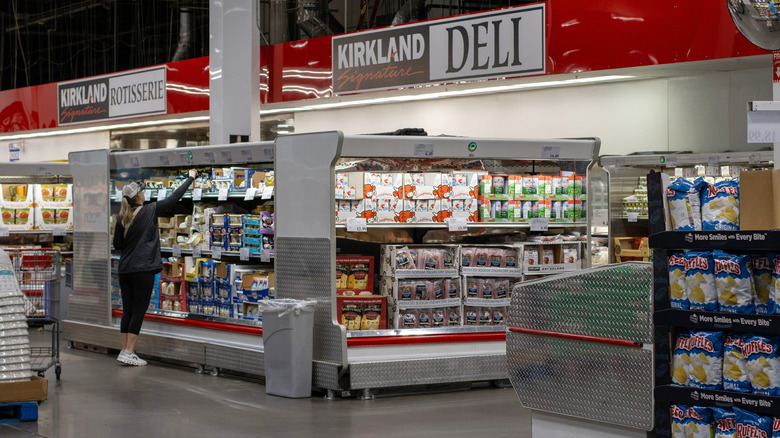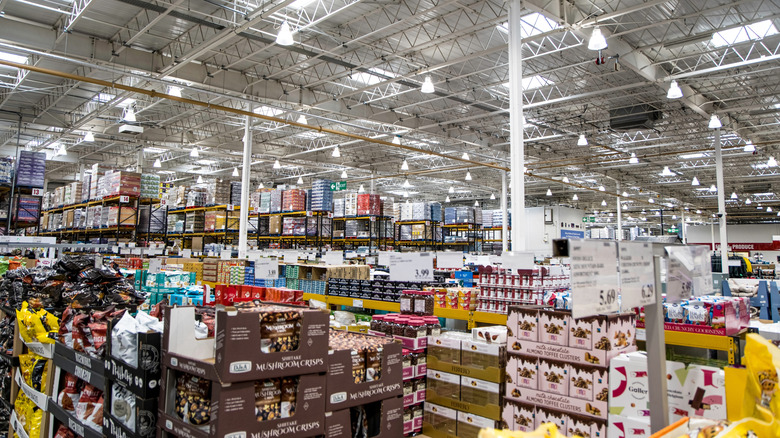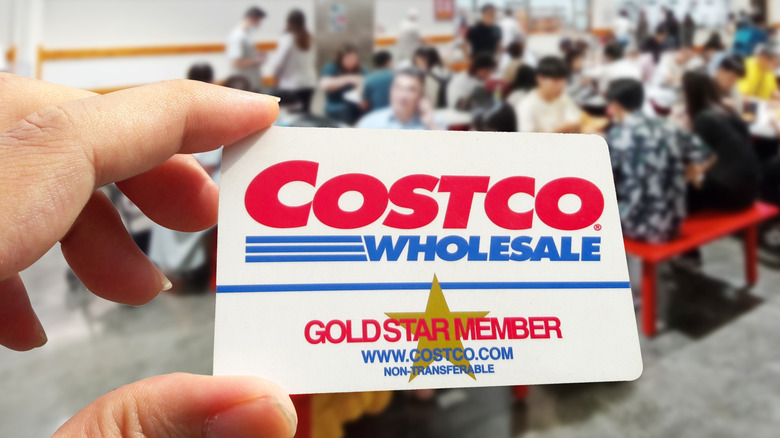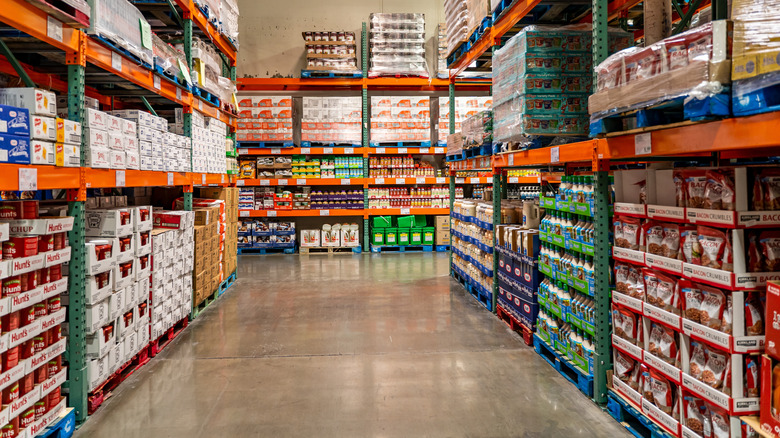Here's What It Was Like To Shop At The First Ever Costco
Before Costco became the bulk-buying behemoth it is today, warehouse shopping was still a novelty — a fringe alternative to traditional department stores and mom-and-pop shops. In the late 1970s and early '80s, most Americans had never wandered down aisles with concrete floors and industrial shelving, let alone paid for the privilege. But that was exactly the draw: a members-only store that ditched frills in favor of savings, built not around shoppers' whims but around practical needs — paper towels by the case, ketchup by the jug, and price tags low enough to make you do a double-take (even if some items these days, like milk and tomatoes, are seriously overpriced).
The man behind the curtain is Jim Sinegal, who began his retail career in San Diego and worked his way up from grocery bagger to industry disruptor. Alongside Jeff Brotman, an attorney turned retail dreamer, he launched the Costco model in 1983, refining the concept he'd already sharpened at Price Club, the original warehouse store, launched in a repurposed hangar years earlier. Their vision was simple: Strip out anything unnecessary, from carpeted floors to advertising budgets, and focus solely on volume-driven savings.
Costco's layout was unconventional
Before the first Costco opened in Seattle, warehouse clubs had already taken flight (pun intended). The first location, launched in 1976 under the Price Club banner, operated out of a converted airplane hangar on Morena Boulevard in San Diego, California. It wasn't polished or pretty, but it was big, bare, and built for bulk.
At first, Price Club served only business customers, and the layout reflected that purpose. The store was built around large-scale access and stripped-down efficiency, with open aisles, minimal signage, and products displayed on pallets rather than shelves. There were no flashy promotions or seasonal endcaps. Just a tight selection of everyday goods, sold in large volumes at reliably low prices. The airplane-hangar setting only reinforced this warehouse-first mindset.
While the first-ever Costco was in an extremely distinctive location, this wasn't the only element that stood out. The whole model — sparse design, members-only access, and serious volume — challenged every retail rule shoppers were accustomed to.
Join the club or pay extra
Costco memberships were never just a formality — they've always been a part of the business model. Small business owners could pay $25 annually to shop, while large companies often enrolled under the Group Gold program, which cost $30 a year. Anyone without a membership could still make purchases, but they had to shell out an extra 5% at checkout — a quick way for casual customers to learn that wandering in without a card wasn't the budget hack they likely thought it would be.
Early Costco wasn't the kind of place you stumbled into; you had to be connected or go out of your way to join, and the result was a shopping experience that felt oddly private, even at scale. This wasn't a place for casual browsing. It was designed for people on a mission — restaurant owners, office managers, and anyone willing to pay for the privilege of buying big. The message was clear: sign up or pay up.
What you see is what you save
Jim Sinegal didn't just help build Costco: He helped unbuild traditional retail. The whole strategy was based on subtraction: no huge signage, no commissioned sales staff, no expensive fixtures, no delivery services, and no back stock gathering dust in storage. If it didn't directly serve the company's bottom line, it was out.
Even pricing had a ceiling. Sinegal enforced a hard limit on profit margins for national brands — no higher than 14%. The cap held firm, even when higher markups would've been easy money for the company. It wasn't just about saving money; it was about removing anything that distracted from the deal. Stores looked industrial on purpose. Customers didn't need greeters or ambient music, they needed paper towels for less. And in a world of bloated retail margins and psychological pricing tricks, Costco's model was refreshingly blunt. You didn't pay extra for an experience. You paid for store-brand toilet paper or a large tub of maple syrup (just one of the must-try food items to buy on your first Costco trip).



